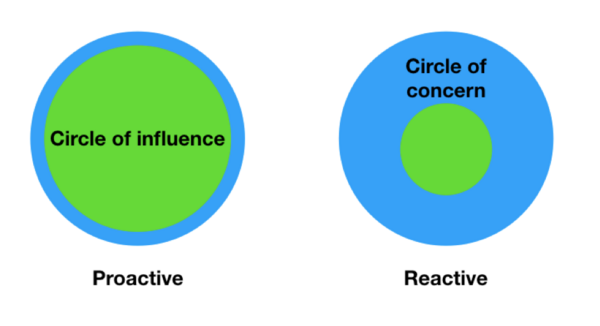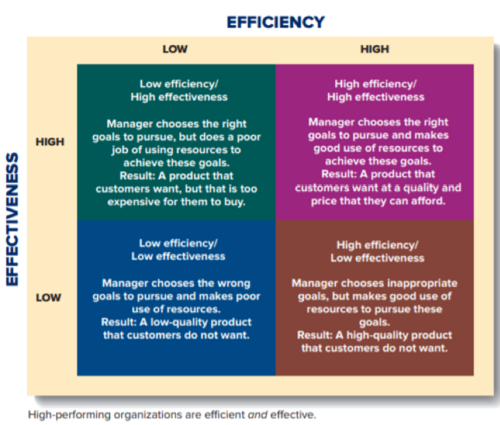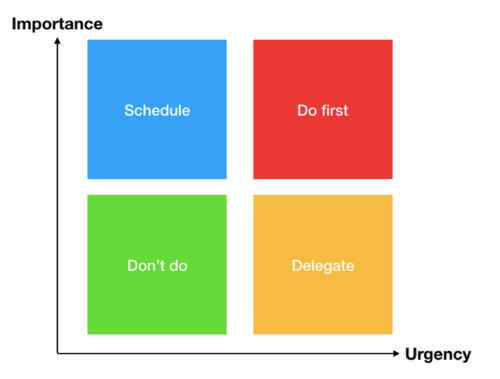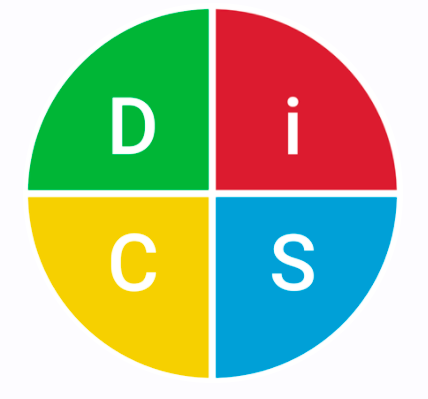The 7 habits of highly effective people applied to Management
This article is based on the book of self-improvement “The 7 habits of highly effective people” [1] written in 1989 by Stephen Covey, a notorious American writer, businessmen and keynote speaker. “The 7 habits of habits of highly effective people” has the purpose to help you achieve your goal, improve your life, reach your true happiness. It will help you improve your well-being both physically and mentally, create deeper and more meaningful connection with people, and optimize the time you have. In this article, you will find the ideas behind each of the 7 habits as well as how they apply to project, program and portfolio management but with a strong focus on how a project manager can benefit from them.
Contents |
Principles and Paradigm
The 7 habits of highly effective people is not only about personal effectiveness, but about leadership development, it emphasizes on building character rather than attaining success. Through the book, Stephen Covey gives a user interface organized into a coherent conceptual framework. The ideas embedded in the frameworks are timeless, they are principles, principles that are core competencies but that you have to work with to renew yourselves, better yourselves. They are in opposition with quick-fix and short term solution. These principles tend toward building character, not achieving success and thereby helped people become not just more effective individuals but better leaders. Those are the factors that make the rarefied stature of the book.
Covey talks about paradigm [2], those way people see the world and understand things, people are made of multiple paradigm, influenced by their experience, their environment and conditioning affects. The habits are built around the concept of two paradigms. The first paradigm is reflecting the definition of success that has been leading most people for the past 50 years before the book was written. This paradigm is filled with social image consciousness, quick-fix and easy techniques that only solve problems on the short term. It is called the Personality Ethic. It defends the idea that success is more a question of personality, attitudes and behaviors, social skills and human interactions. In the opposite way, the second paradigm called the Character Ethic comes from the definition of success in the 150 years before. This paradigm is filled with integrity, humility, loyalty, patience, justice and courage. It defends the idea that someone can only experience happiness and success as they learn the basic principles of effective living and integrate them into their basic character. The Personality Ethic is not all deception, some of its aspects like communication skill or personality growth can be positive and even key to success, but they are just secondary trait while the Character Ethic is the first trait, the foundation of happiness. And as the paradigm they rely on, the 7 habits are primary and fundamental principles of human effectiveness. But first, before implementing these habits, a shift toward the Character Ethic is needed, to change your view of things and be open to other perceptions and get a more objective view. This paradigm theory can be simply translated by this affirmation of Covey: “The way we see the problem is the problem”.
And through the theory of the 7 habits, you will start by working on your inner self, on the “being the solution”, before implementing the solution. Work on your private victories before the public victories. The habits are the intersection of knowledge, skill and desire. They will lead you from the stage of dependence to independence and then toward interdependence, which is the most important stage. The first three habits will guide you from dependent to independent, where you will be able to master yourself. Then the habits 4 to 6 will guide you through public victories. The 7th habit is about constantly renewing yourself, a reminder of always implementing the previous habits.
Connection with Project Management
The 7 habits of highly effective people is not a map one-for-one to building a great company, it’s a general guide on how to develop yourself and understand other. It can be complemented with the "Good to great" [3] and "Built to last" [4].
Whether you are a CEO of a multinational company, the head of your department, a manager in a growing company, an entrepreneur or simply an individual looking to improve itself, “The 7 habits of highly effective people” will help you identify your true goals and achieve them. Many great figures of management claim using the principles of this book such as Meg Whitman, former CEO of Hewlett Packard, Joel Peterson, Chairman of the Board at JetBlue, Michael Phelps, Olympic medalist, Admiral Vern Clark or even Bill Gates, CEO of Microsoft.
This book is first design for individual but can be implement on an organization, a company or else by simple transposition and parallel comparison. The application of theses habits to a company can be define as the following: preserve the core competencies and stimulate progress. As explained earlier in the concept of paradigm, in the management of project you will encounter problems, exchange with stakeholders and sometimes will be looking for quick solution and easy techniques. But what this book will provide you is long term solution on how to manage all your projects, programs or portfolios. You will be able to develop a strong foundation and deep values on which you will rely to define your goals and objective, develop your strategy, organize your portfolios and act in consequences all along your projects. As well as presenting the 7 habits of highly effective people in the following part, you will find parallels and illustrations on how those habits can work for a company, a director or a manager.
The 7 Habits
In this part, you will be introduce to the 7 habits of Highly effective people. And through all these habits, you will start by working on your inner self, on the “being the solution” before implementing the solution in public. Work on your private victories before the public victories. But first, let’s define the habits. They are the intersection of knowledge, skill and desire. They are the strong pull that will become the basis of a person’s character. They will lead you from the stage of dependence to independence and then toward interdependence, which is the most important stage. The first three habits will guide you from dependent to independent, where you will be able to master yourself. Then, the habits 4 to 6 will guide you through public victories.
Habit 1: Be Proactive
This habit basically translates the idea that you should focus on what you can actually do rather than focusing on what is out of your control.
As a project manager, this can be translate by accepting all the things that might have gone wrong during your project and focusing on what ,in the current situation, you can do to improve your situation, what you can actually do rather than complaining.
For example, your project depends on whether or not a supplier can provide you the components you need to go further, but for some reason this supplier fails in respecting the deadline and you have now a delay in your project. What being proactive means in this situation is that you shouldn’t complain to the supplier but try to understand why there is a delay and how you can solve it, how you can get back the time you lost or how you can get more time to finish your project. You can either look at the planning, try to work extra hours in order to win back the time loss, or negotiate a new deadline with the client. There is lot of solution that are accessible to you, but complaining about the supplier isn’t one, you will never be able to change the fact that he missed his deadline but you can control the outcome.
Habit 2: Start with the end in mind
The idea behind this habit is to define your real objective, the one that will lead you to happiness. Covey illustrates this habit by asking how do you imagine your funeral. What would your close friends, your colleagues, your family and your acquaintance say about you, what would be their most important memory of you? What do you want them to keep from you ? By answering those questions, you will identify what really matters to you, what you really care about and gives you an objective.
This is the first creation, the leadership part, the one that told you the right decision. You define what is the correct direction for yourself.
This can and should be apply to any project, program or portfolio. As a company, imagine where you want to be in a decade. What economic situation you want to be? How much growth you want to achieve? What are the value that you want your client to associate you with ? Once you answer those questions, you will be able to define your strategy for the future of your company and with that the portfolio of your company. As a project manager, you have a project to lead. Leading a project should be like building a house. You start by the blue print, you imagine what would be the perfect house for you, you go through all the details, plan every rooms, every material you will use. That’s the first creation of your project. The same things should be apply to project management, you have to define right from the beginning what are your expectations for your project in order to plan what it will require.
Habit 3: Put first things first
The 3rd habit goes directly after the 2nd one. Once you have identify your end, your goal, you now can plan the action that will lead to it. You can eliminate the action that were clouding your mind, preventing you from following the right way. This is the second creation part, this is the management part, the one that tell you how to do it. You have to prioritize your actions for your project, your projects for your program and your programs for your portfolio. Once you have the image of where you want to be in the future, you have to decide what tasks are required, the first things, and do them in priority, put them first. Take the same example as for the 2nd habit. You have the blue print of your house, now it is time to build it. Here comes the second creation, the physical creation, all the stakeholders come in and start working toward the end you’ve defined. And every day you follow the evolution of the construction, make sure that you are working in the right direction, that you are following the step in the right order like building the foundation before building the wall for example.
Habit 4: Think Win-win
As explained earlier, you are now in the phase of becoming interdependent. In the paradigm of Personality Ethic, it is common to consider that in order to win, someone else has to lose. But not in the paradigm of Character Ethic. Here, you are encouraged to collaborate, to make sure that both parts will come out with a win. You can distinguished different kind of character:
- - Win-Win: Both people win. Agreements or solutions are mutually beneficial and satisfying to both parties.
- - Win-Lose: Win-Lose people are prone to use position, power, credentials, and personality to get their way.
- - Lose-Win: Lose-Win people are quick to please and appease, and seek strength from popularity or acceptance.
- - Lose-Lose: Both people lose. When two Win-Lose people get together -- that is, when two, determined, stubborn, ego-invested individuals interact -- the result will be Lose-Lose.
- - Win: People with the Win mentality don't necessarily want someone else to lose -- that's irrelevant. What matters is that they get what they want.
- - Win-Win or No Deal: If you can't reach an agreement that is mutually beneficial, there is no deal.
This is really important in project management. By making sure that nobody is left aside and all the stake holders are profiting from the project, you keep them motivated, engaged and willing to go forward. This also apply with the client, by developing a win-win philosophy, you make sure of your client loyalty, you create a unique and nourishing relationship with the customer.
Habit 5: Seek first to understand, then to be understood
This habits refers to a recurrent problem you can meet in project management. It is not rare to see someone trying to explain a solution to a problem that does not exist because he simply didn’t understand the real problem. Communication is a key component in project management. First to provide an efficient solution to your client you need to understand his need. In case of conflict, you need first to understand the origin of the conflict before being able to solve it. It won’t only help you solve the problem, but it will also allow you to spare time and resources spend on the wrong problem. You will be able to develop a stronger and more meaningful relationship with your partner, associate or client by creating a climate of trust and sincerity. Furthermore, the need to understand and to be understood is critical in project management. That is why tools such ad DISC have been developped to help manager get a better understanding of their collaborators.
Habit 6: Synergize
The idea behind the 6th habit is that 1 + 1 can make more than just 2, that you will achieve way much more by working with other toward the same goal than doing it alone. It encourages to works with differences and value them. This is true in project management. It is often that you do something for a project and end up realizing that this particular thing that you did has already been done by someone in your department. By synergizing with your colleagues, you will be able to achieve your project faster and maybe in an even better way that you initially thought. The same way that your colleague will be able to receive an external opinion on his work that might help him unlock potential. It is a more and more current phenomenon in the innovation area, some company starts to collaborate with their competitors in order to develop technology that they wouldn’t have been able to develop alone. This can also be apply with supplier or non-competitors. On an even more fundamentals level, the main principle of project is to synergize, to put people from different horizons to achieve something that none of this individual alone would have been to realize.
Synergizing relate to the management of competencies inside a team, department or company. It can be support by various tools such as Competency Mapping [9] or Fitness Level Test [10].
Habit 7: Sharpen the saw
Imagine a man trying to saw a tree with a dull saw. Another man comes and advises him to sharpen his blade. The first man tells him that after the time he has already spent sawing, he will be able to saw the tree faster than sharpening the blade. The fact is that if he had already sharpened the blade, he would have already finished sawing that tree. The idea of sharpening the saw illustrates the fact that it is more important to take the time to work with the proper tools than to insist on something that isn’t efficient. Applied to project management, this would mean that you should take the time to work with the proper software, make sure that everyone is familiar with those tools. By having the most efficient and most effective systems and tools, this will improve and accelerate your process as well as minimizing the effort. Also taking the time to step back from your project or portfolio will enable you to see the bigger picture, to see what works well and should be reproduce, what should be improved. Sharpening the saw also means to improve yourself, and for a company or a project manager, this means to look out for your employee make sure that they are always in the best condition to work. It also means to always look for a new and better way to do, to look for innovative process.
Critics and limitation
This book will only gives you general guidance, it won’t give you all the key to solve your problem, it’s not a precise and detailed solution, it’s a way of thinking, a conceptual approach of management that will allow you to find the solution to all your problem yourself. Another limitation of this book is that it is based on the opposition of two paradigm, the Character Ethic and the Personality Ethic. As we’ve seen, the Personality Ethic has appeared during the 20th century, so we can ask ourselves whether or not this book and its principles would still be valid if a third paradigm appeared and become predominant. A final limit that we can put on this book and that relates the previous remarks is that this book was published 32 years ago and that in a constantly and fast evolving context, can we be sure that these principles are still valid and will stay that way? A beginning of answer is that these principles tends to be general, timeless and universal, so the question would be more how can they be apply to our current situation rather than are they relevant. New insights have been added in the 25th anniversary edition, closing the gaps that have appeared since the first edition so we can safely say that this book is still relevant for our time and will still be in the future.
Conclusion
This book and its 7 habits are a great guide for those who is willing to open his eyes and see things differently, for those who accept that take change will take time and that there is no shortcut, for those who want to better themselves as well as their environment. As we announce, these principles are general and timeless, you won’t be a better person, leader or manager just by reading it, but you will have the tools and capability of improving yourself. After reading this article, you should have the basic understanding on how to shift your view and implement these new habits in order to improve your management skills. As a project manager, these habits will allow you to save time and ressource and also create deeper, more meaningful relations with your collaborators, customers, supplier or any stake holders in your project. You will be able to focus on your true goals and the actions that need to be taken in order to achieve them. You will be able to go further than you ever could, by collaborating and synergizing with people around you.
References
Sources:
- - “The 7 habits of Highly effective people” by Stephen Covey
- - "Personality and Character Ethic In The World of Work", World of Work Project, March 2019https://worldofwork.io/2019/03/personality-character-ethic/
- - "Good to Great: Why Some Companies Make the Leap... and Others Don't" by Jim C. Collins
- - "Built to Last: Successful Habits of Visionary Companies" by Jim Collins and Jerry I. Porras
- - Contemporary Management Book Chapter 1, Gareth Jones and Jennifer George
- - Eisenhower Matrix
- - DiSC profile, www.discprofile.com/what-is-disc
- - Competency mapping, www.innovation-portal.info/resources/competency-mapping/?books=book1
- - Innovation fitness test, www.innovation-portal.info/toolkits/innovation-fitness-test/
To go further:
- - The 8th Habit: From effectiveness to Greatness by Stephen Covey
- - The 7 habits for Managers by Stephen Covey
- - The 7 habits Leader Implementation by Stephen Covey



